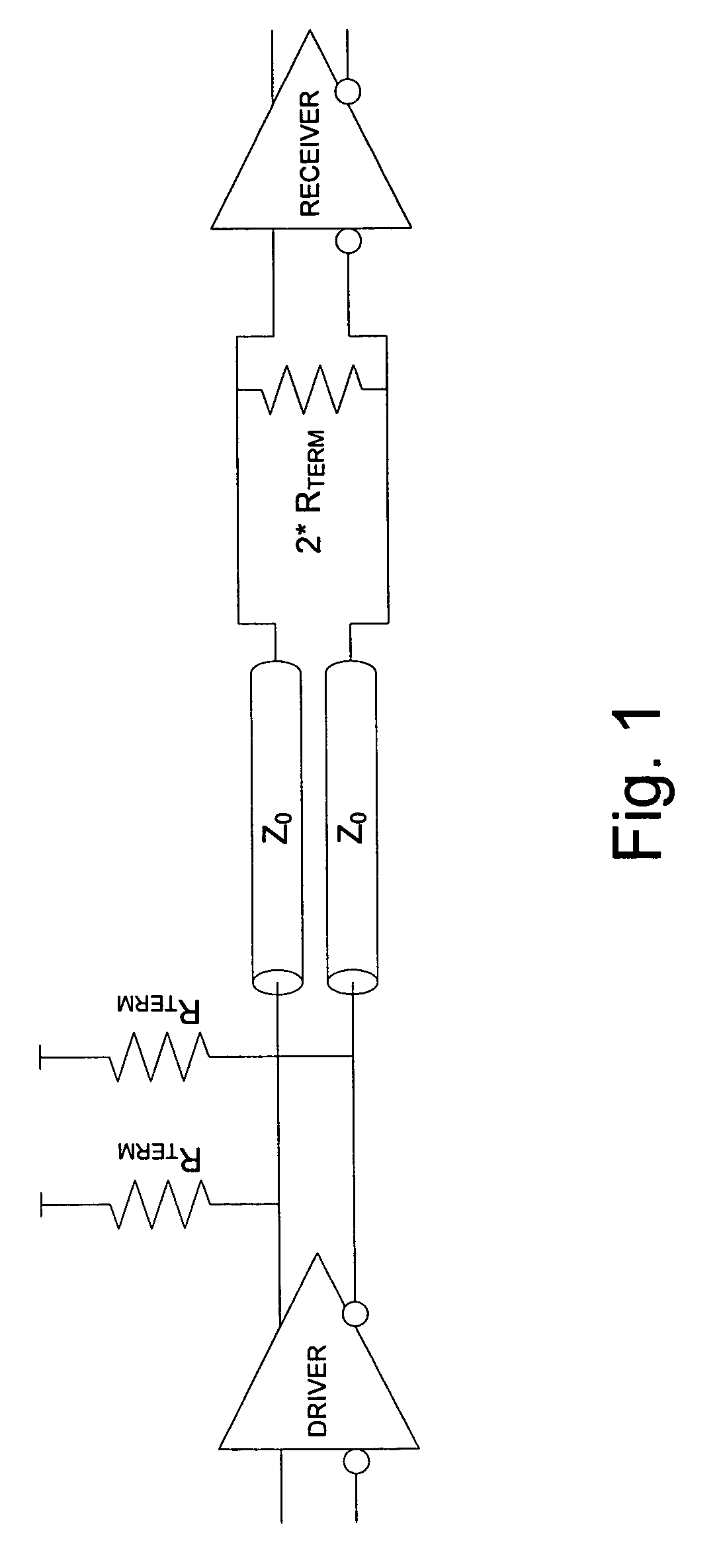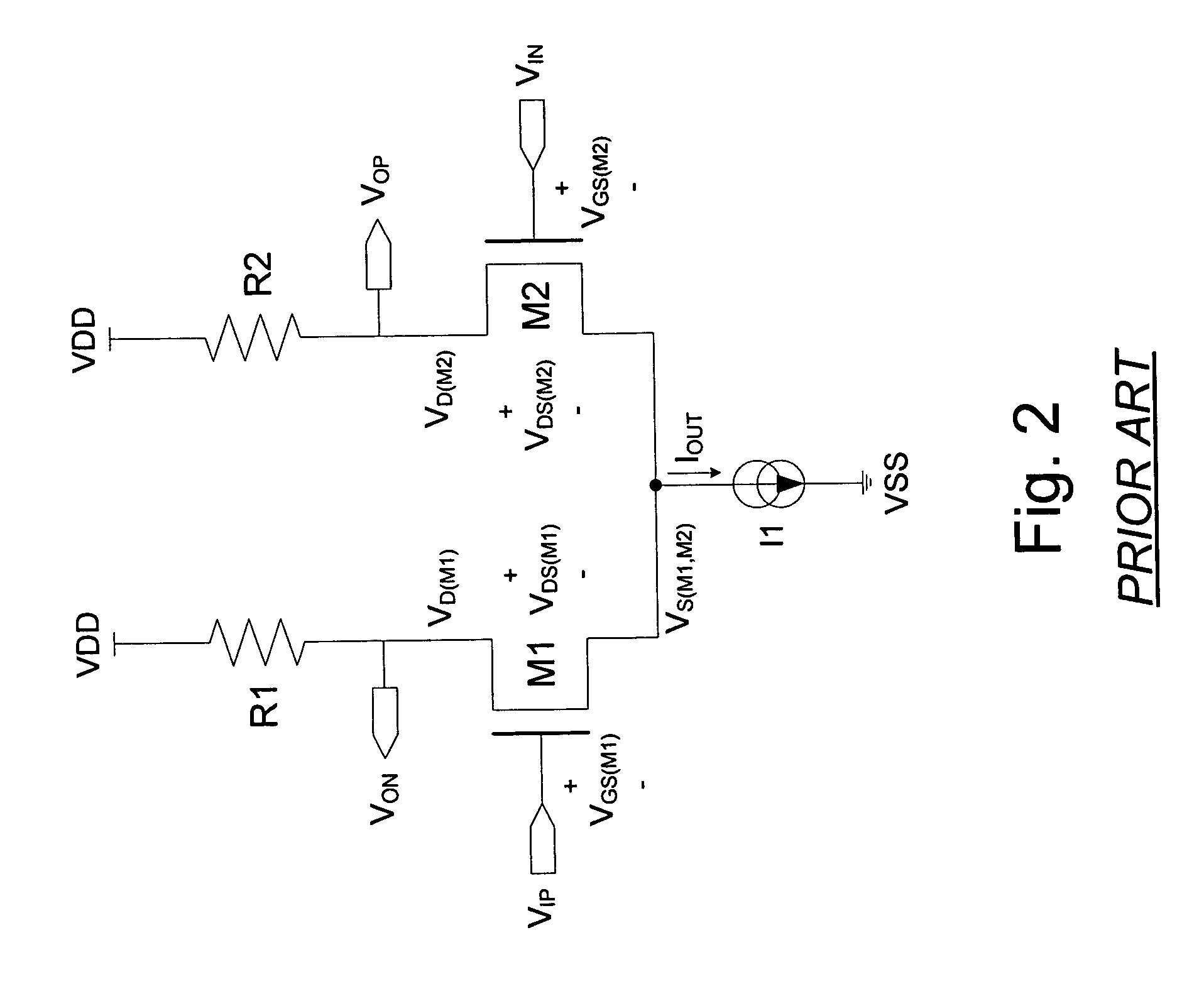Active biasing in metal oxide semiconductor (MOS) differential pairs
a technology of metal oxide semiconductor and differential pair, which is applied in the field of differential circuits using metaloxide semiconductor (mos) field effect transistors, can solve the problems of reducing the sensitivity of output swing to supply variation, affecting the integrity of received signals, and traditional approaches that are impractical
- Summary
- Abstract
- Description
- Claims
- Application Information
AI Technical Summary
Benefits of technology
Problems solved by technology
Method used
Image
Examples
Embodiment Construction
[0046]Although particular embodiments are described herein, other embodiments, including embodiments that do not provide all of the benefits and features set forth herein, will be apparent to those of ordinary skill in the art.
[0047]While generally illustrated in the context of differential circuits using N-type MOSFET (NMOS) transistors in the differential pairs, the skilled practitioner will appreciate that the principles and advantages described herein will also be applicable to differential circuits using P-type (PMOS) transistors in the differential pairs. In addition, the principles and advantages described herein can also be applied to differential drivers that use a combination of an NMOS and a PMOS differential pairs. Such structures are relatively common in low voltage differential signaling (LVDS) drivers. Examples of differential signaling protocols include XAUI, CEI-6, SAS, SATA, FiberChannel, and the like. For example, biasing circuits and corresponding drivers can be ...
PUM
 Login to View More
Login to View More Abstract
Description
Claims
Application Information
 Login to View More
Login to View More - R&D
- Intellectual Property
- Life Sciences
- Materials
- Tech Scout
- Unparalleled Data Quality
- Higher Quality Content
- 60% Fewer Hallucinations
Browse by: Latest US Patents, China's latest patents, Technical Efficacy Thesaurus, Application Domain, Technology Topic, Popular Technical Reports.
© 2025 PatSnap. All rights reserved.Legal|Privacy policy|Modern Slavery Act Transparency Statement|Sitemap|About US| Contact US: help@patsnap.com



